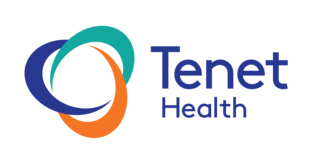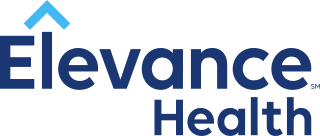Health insurance or medical insurance is a type of insurance that covers the whole or a part of the risk of a person incurring medical expenses. As with other types of insurance, risk is shared among many individuals. By estimating the overall risk of health risk and health system expenses over the risk pool, an insurer can develop a routine finance structure, such as a monthly premium or payroll tax, to provide the money to pay for the health care benefits specified in the insurance agreement. The benefit is administered by a central organization, such as a government agency, private business, or not-for-profit entity.
The term managed care or managed healthcare is used in the United States to describe a group of activities intended to reduce the cost of providing health care and providing American health insurance while improving the quality of that care. It has become the predominant system of delivering and receiving American health care since its implementation in the early 1980s, and has been largely unaffected by the Affordable Care Act of 2010.
...intended to reduce unnecessary health care costs through a variety of mechanisms, including: economic incentives for physicians and patients to select less costly forms of care; programs for reviewing the medical necessity of specific services; increased beneficiary cost sharing; controls on inpatient admissions and lengths of stay; the establishment of cost-sharing incentives for outpatient surgery; selective contracting with health care providers; and the intensive management of high-cost health care cases. The programs may be provided in a variety of settings, such as Health Maintenance Organizations and Preferred Provider Organizations.
UnitedHealth Group Incorporated is an American multinational health insurance and services company based in Minnetonka, Minnesota. Offering insurance products under UnitedHealthcare, and health care services and care delivery aided by technology and data under Optum, it is the world's eleventh-largest company by revenue and the largest health care company by revenue.

Tenet Healthcare Corporation is a for-profit multinational healthcare services company based in Dallas, Texas, United States. Through its brands, subsidiaries, joint ventures, and partnerships, including United Surgical Partners International (USPI), the company operates 65 hospitals and over 450 healthcare facilities. Tenet also operates Conifer Health Solutions, which provides healthcare support services to health systems and other clients.

Blue Cross Blue Shield Association, also known as BCBS, BCBSA, or The Blues, is a United States-based federation with 34 independent and locally-operated BCBSA companies that provide health insurance in the United States to more than 115 million people as of 2022.
Health care prices in the United States of America describe market and non-market factors that determine pricing, along with possible causes as to why prices are higher than in other countries.
Centene Corporation is a publicly traded managed care company based in St. Louis, Missouri, which is an intermediary for government-sponsored and privately insured healthcare programs. Centene ranked No. 25 on the 2023 Fortune 500.
In the United States, health insurance helps pay for medical expenses through privately purchased insurance, social insurance, or a social welfare program funded by the government. Synonyms for this usage include "health coverage", "health care coverage", and "health benefits". In a more technical sense, the term "health insurance" is used to describe any form of insurance providing protection against the costs of medical services. This usage includes both private insurance programs and social insurance programs such as Medicare, which pools resources and spreads the financial risk associated with major medical expenses across the entire population to protect everyone, as well as social welfare programs like Medicaid and the Children's Health Insurance Program, which both provide assistance to people who cannot afford health coverage.

The British United Provident Association Limited, trading as Bupa, is a British multinational health insurance and healthcare company with over 43 million customers worldwide.
In the United States, health insurance marketplaces, also called health exchanges, are organizations in each state through which people can purchase health insurance. People can purchase health insurance that complies with the Patient Protection and Affordable Care Act at ACA health exchanges, where they can choose from a range of government-regulated and standardized health care plans offered by the insurers participating in the exchange.
A health insurance mandate is either an employer or individual mandate to obtain private health insurance instead of a national health insurance plan.

The Affordable Care Act (ACA), formally known as the Patient Protection and Affordable Care Act (PPACA) and colloquially known as Obamacare, is a landmark U.S. federal statute enacted by the 111th United States Congress and signed into law by President Barack Obama on March 23, 2010. Together with the Health Care and Education Reconciliation Act of 2010 amendment, it represents the U.S. healthcare system's most significant regulatory overhaul and expansion of coverage since the enactment of Medicare and Medicaid in 1965.

Elevance Health, Inc. is an American health insurance provider. Prior to June 2022, Elevance Health was named Anthem, Inc. The company's services include medical, pharmaceutical, dental, behavioral health, long-term care, and disability plans through affiliated companies such as Anthem Blue Cross and Blue Shield, Anthem Blue Cross in California, Wellpoint, and Carelon. It is the largest for-profit managed health care company in the Blue Cross Blue Shield Association. As of 2022, the company had 46.8 million members within its affiliated companies' health plans.
James Claude Robinson is a professor of health economics at the University of California, Berkeley School of Public Health, where he has the title of the Leonard D. Schaeffer Endowed Chair in Health Economics and Policy. Robinson is also the Chair of the Berkeley Center for Health Technology, which supports research and professional education projects related to coverage, management, and payment methods for innovative technologies including biopharmaceuticals, medical devices, and diagnostics.

Trustmark is an insurance company. According to Crain's Chicago Business magazine, Trustmark ranks #69 among Chicago's Largest Privately Held Companies in 2018.
The Affordable Care Act (ACA) is divided into 10 titles and contains provisions that became effective immediately, 90 days after enactment, and six months after enactment, as well as provisions phased in through to 2020. Below are some of the key provisions of the ACA. For simplicity, the amendments in the Health Care and Education Reconciliation Act of 2010 are integrated into this timeline.

Wellmark Blue Cross Blue Shield is a mutual insurance in the United States with more than two million members in Iowa and South Dakota. It is the dominant health insurance in Iowa. It is an independent licensee of the Blue Cross Blue Shield Association. Founded in 1939, Wellmark offers dental and health insurance as well as life insurance. It began participating in the health care exchange for 2017.
This article summarizes healthcare in California.
The Patient Protection and Affordable Care Act, often shortened to the Affordable Care Act (ACA) or nicknamed Obamacare, is a United States federal statute enacted by the 111th United States Congress and signed into law by President Barack Obama on March 23, 2010. Together with the Health Care and Education Reconciliation Act of 2010 amendment, it represents the U.S. healthcare system's most significant regulatory overhaul and expansion of coverage since the passage of Medicare and Medicaid in 1965. Once the law was signed, provisions began taking effect, in a process that continued for years. Some provisions never took effect, while others were deferred for various periods.

Sidecar Health is an American health insurance company headquartered in El Segundo, California. The company offers insurance plans serving the large group, ACA and IFP markets in 18 states.







